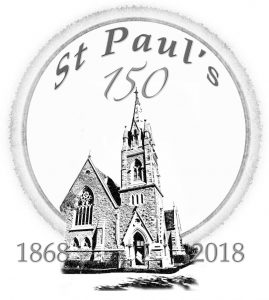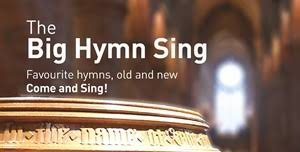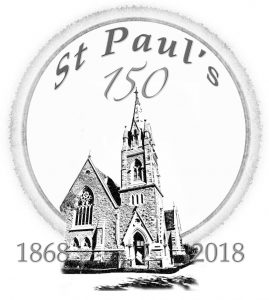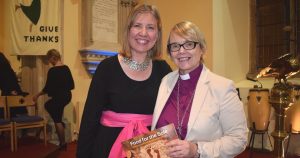St Paul’s was the sixth of seven Church of Ireland churches to be built in this area within 30 years of the opening of the Dublin-Kingstown railway, the Rector, the Rev Gary Dowd, told the congregation who attended the service yesterday to mark the opening of the building for worship 150 years ago.
However, while it opened on January 2nd, 1868 the building was still not finished and another six months passed before the church was consecrated. This date, July 8th, falling as it does on a Sunday this year, will be the focal point of our 150th anniversary celebrations.
The Lords Longford and de Vesci gave the site, and consent to build the new church had to be given by the Rector of Monkstown Parish, the Rev Ronald Mac Donnell. A bequest of £4,000 from a Miss Jane Shannon from Belfast financed the construction of the building; she also left money to build three other church in the Dublin area but of those only Zion and St Paul’s remain open today.
The first Rector of St Paul’s The Rev G.W. Dalton, was appointed in August 1867 about four months before the building opened. Apparently he left a distinct impression on the neighbourhood, being far from what is called a popular man, said Rev Dowd, who is the parish’s 10th Rector.
Only one former Rector is still alive, Gordon Linney, who served 24 years, second only to Rev EG Robinson who served 26. The second Rector, Canon John Dowse, spent the shortest time here, leaving after just five years, having been appointed as Rector of Monkstown, which was obviously deemed to be promotion in those days.
There have also been at least 30 curates and some of those surviving are being invited back to St Paul’s to preach on different Sunday mornings throughout 2018, along with the Ven Linney, and some former parishoners who went on to be ordained.
Rev Dowd quoted some comments made 50 years ago by the then Rector, Rev John Duggan on the 100th anniversary of St Paul’s: “In the past, the life of the church and the life of the individual were closely woven together in a manner that is not so apparent in our modern society with its commuters into the city for a five-day working week and the car available at the weekends, available to transport the family to the caravan at the sea side for the weekend”. However, Rev Duggan added: whether you are a regular church goer or not, Church still enters your life at crucial times: baptism, Sunday School, youth organisations, Confirmation, marriage, death.
“Can we still say that?” asked Rev Dowd, pointing out that within the last 25 years, society has undergone more rapid changes than at any time before.
Concluding an entertaining potted history of St Paul’s, our current Rector added that while it is nice to look back over those 150 years, it is only a building and the Church is its people. It is we, the parishoners of 2018, who will determine the next chapter of the history of St Paul’s.

How the Victorians saw the opening of St Paul’s
In the “Daily Express” of January 3rd, 1868, appeared the following account of the opening of the Church:
“The new Church of St. Paul, Glenageary, was opened for Public Worship for the first time yesterday morning. The sacred edifice is situated on an eminence close to the Adelaide Road Station and commands a fine view of a wide tract of country.
“The district is attached to the Parish of Monkstown, but the increasing importance of the locality rendered it desirable that more spiritual provision should be made, and there is no doubt that the new Church will supply a want which has been generally felt.
“The Church of St. Paul is of the Gothic style of architecture and, although not large, is extremely tasteful and imposing. The building measures 101 feet 6 inches internally by 35 feet 6 inches wide, and 55 feet 6 inches high to ridge. It comprises a Nave, and Chancel measuring l8 feet 6 inches by 21 feet. It is in the Decorative style and has at the south-west corner a Tower and Spire rising to a height of 120 feet to the top of the iron finial.
“The structure was erected by Mr. John Nolan of Dublin, from the design of Mr. A. Jones, Architect. The amount of the contract was about £4,000.”







